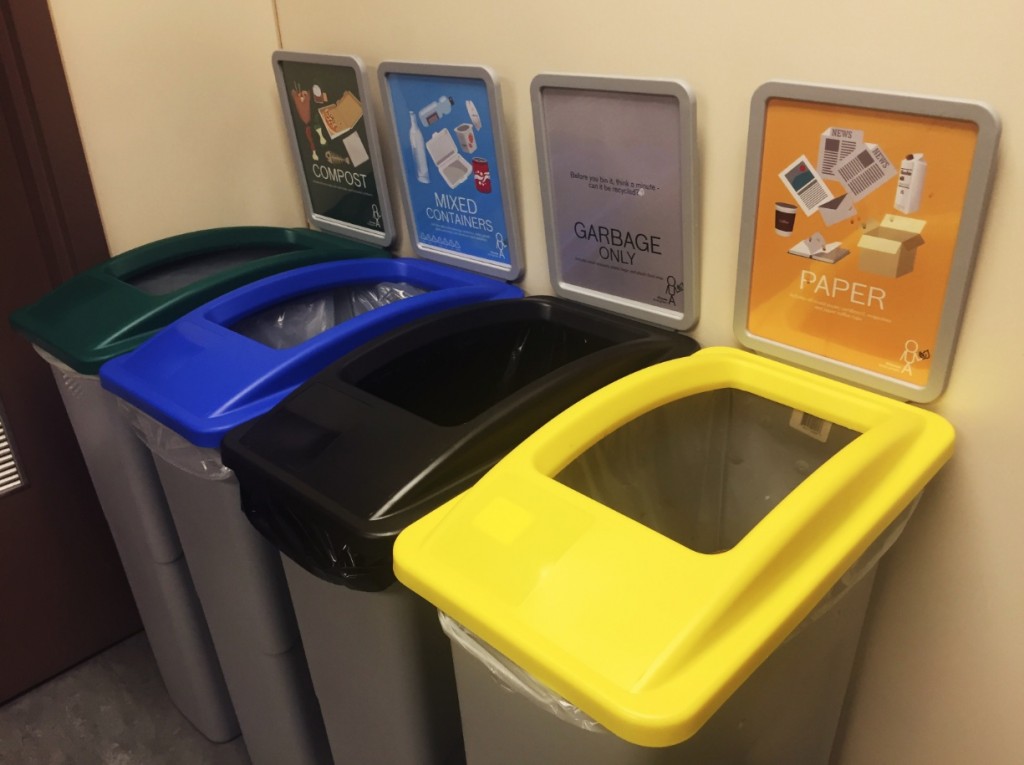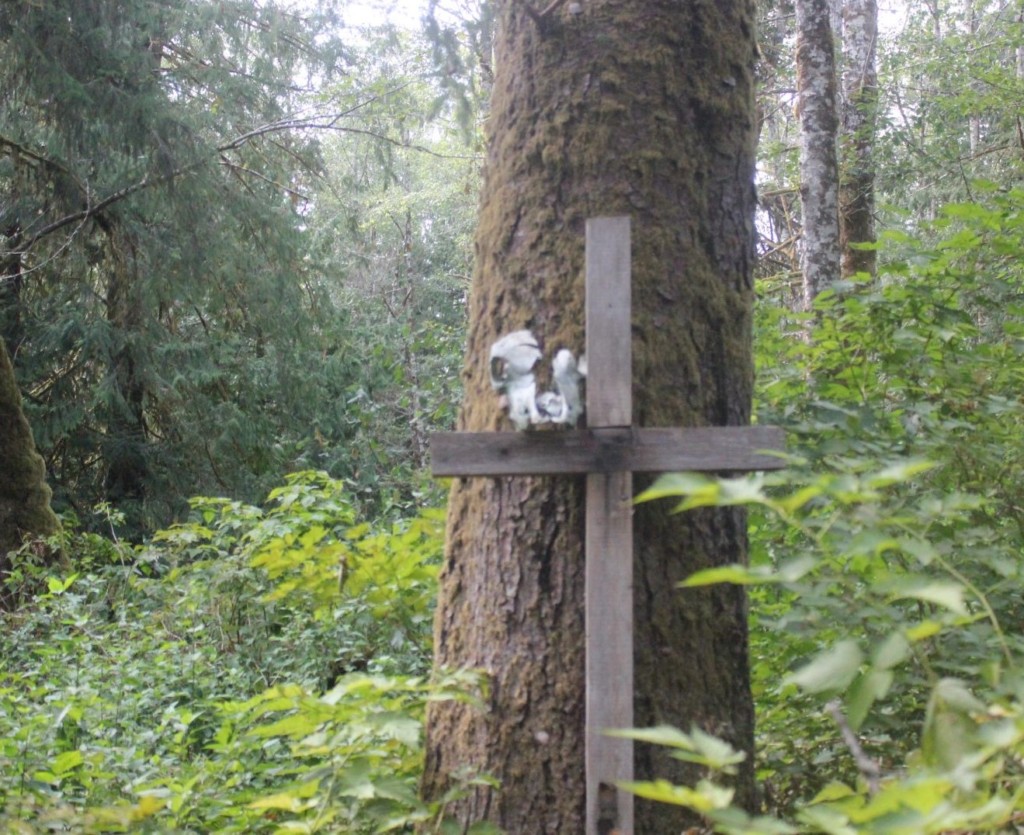
A look at the new recycling initiative being put in place this year
By Jamal Al-Bayaa, Staff Writer
Douglas College’s new garbage and recycling program isn’t wasting any time setting the tone for what garbage and recycling disposal will look like at the college from here onwards.
A team of dedicated staff and student volunteers—led by Andrew Hodgson, facilities manager at New Westminster—is working towards a common goal: educating the Douglas College population of how the new system will work. They can be seen in the concourse, near recycling bins, and elsewhere around campus in bright green shirts.
The goal is a total of 75 per cent waste diversion, meaning that only 25 per cent of everything Douglas College students will throw out will go into the garbage. It’s a common goal among universities, as well as the milestone that the City of Vancouver and other municipalities are trying to reach.
It is a difficult one, however, with Hodgson telling the Other Press that similar initiatives elsewhere have currently achieved a landfill diversion rate of about 58 per cent.
By far, the biggest change that students and staff will see is the addition of a new composting bin. It is now completely separate from garbage, meaning it will now be sorted and taken to a composting facility, where as before it was taken to the landfill, which is environmentally damaging, and generally inefficient. The addition of a composting bin brings the total bin number up to four.
Despite the efforts of staff and student volunteers, the Douglas College population reports a general feeling of confusion around the specifics of what goes in which bin. Where do straws go? Where do coffee cups go? Where does the metal foil of a yogurt container go? The problem that the recycling initiative is currently experiencing is that if people don’t know where something goes, they often revert back to their “safest option,” which is throwing things out into the garbage. However, with a 75 per cent landfill diversion target, this is possibly the worst place to throw most items.
A campaign was made to smooth the transition from a garbage mindset to a recycling mindset. Coffee cups have been especially tricky for the new recycling program, and were reported as one of the most common mistakes made. “Pop the Top,” illustrates the coffee cup going into a paper recycling bin, and the lid going into a mixed containers bin. The poster illustrates the marketing style of the recycling campaign well, with few words, visual appeal, and easily digestible information.
“We really rely on good signage,” Hodgsons said.
He elaborated that it’s especially important that the whole project looks professional and respectable, and he feels that the campaign has achieved that goal. Hopefully, that respect translates into a greater appreciation of the recycling process.
Implementation has been considered a success, but reports of student confusion continue. Likewise, there is visual proof that people are still unsure of exactly what goes where. However, it is improving over time, and it is part of a process that will take many months of feedback, and trial and error.



